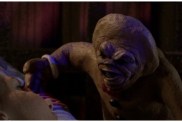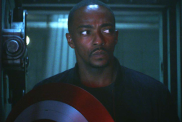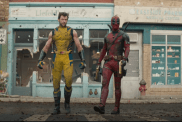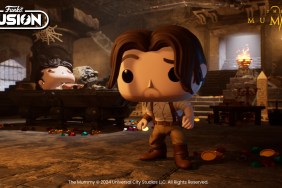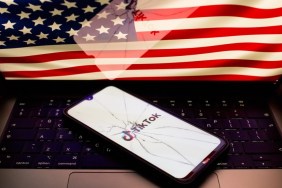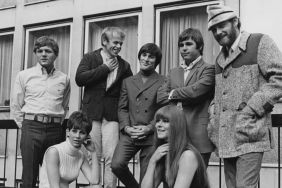
The world is fascinated by pirates, and the first two films in the Pirates of the Caribbean franchise have profited handsomely off of that phenomenon. How handsomely? Try $1,719,573,730 worth at the worldwide box-office. If you throw in DVD sales we’re talking about multi-billion dollar franchise even before the third edition hits on May 24th. For comparison’s sake the massive franchises list of the past decade goes a little something like this, the numbers following each title indicate the amount of money the first two films in the trilogy grossed as they headed into a third film:
- Star Wars: $1.6 billion
- Spider-Man: $1.6 billion
- Pirates: $1.7 billion
- Lord of the Rings: $1.8 billion
To be fair both Star Wars and Lord of the Rings would look a little better if adjusted for inflation but you get the idea. Pirates is hella big. And there’s one major difference worth talking about between all of the other major franchises and Pirates. To sum it up with a word: history. Because the Pirates franchise is based (though sometimes loosely of course) on actual pirate history and lore. Pirates were indeed real people with real ideas. We can’t reference elves or wookies, and not even one person who could produce webs from his wrists existed back in the 1700’s when the pirate business was booming.
But why are we so fascinated with pirates? What exactly did Depp, Bloom, Knightley and Verbinski tap into here? How did writers Ted Elliott and Terry Rossio fuse together something so successful? I think the answer lies in the conundrum of pirates as a concept. Yes, they were marauders and murderers, cast adrift from polite society. Yet, within the framework of plunder and pillaging they somehow, on certain fronts, stood for more noble ideals than society at large. They were free men in an era where there wasn’t such a thing. There were solid reasons that many men thrown into the navy decided that the pirate life was a better fit for them.

Speaking of, the black skull and bones flag originated around 1700 in the pirate culture. But before the pirates adopted it, the well known skull and long bones symbol had always been associated with graveyards and crypts. It was a symbol of death, and you can see where that would be handy in trying to build up a solid bad-ass reputation. Of course, pirates did not fly under the Jolly Roger all the time, just as no one wears around t-shirts saying “I’m carrying ten pounds of marijuana in my backpack.” No, pirates used the flag for effect:
In June 1720 when Bartholomew Roberts sailed into the harbor at Trepassey, Newfoundland with black flags flying, the crews of all 22 vessels in the harbor abandoned them in panic. ~ Source: Wikipedia
Interestingly it seems as though a red pirate flag was also used, and this one was even more menacing. Known as the “Bloody Red” the red flag meant that no prisoners would be taken if the pirates took the ship. This method of intimidation often helped pirates secure valuables without firing a shot, because no one wanted to see the black flag taken down and replaced with a red one. In the Pirates franchise red flags are seen, but are never expounded upon. So you’re already smarter for reading this far!

Every man has a vote and equal access to provisions.
This “voting” idea was still not the prominent political dogma, and it’s interesting to note that the men who supported it on the sea were in fact criminals. In most cases you didn’t have a vote on dry land, but if you were a thief for a living you had a voice. Rule three of Bart’s code was:
No gambling (dice or cards)

Hmmm… that throws some cold water on that whole dice game Bloom played with Davy Jones doesn’t it? Oops, no wait, that game did exist – it was called “Liar’s Dice” (and you can play it for yourself on the Dead Man’s Chest Blu-ray Disc) and the only liberty the script took with the actual game was that you only lost one of your die per exposed lie (not all of them). But back to the code (rule eight):
No fighting on board, but disagreements may be handled on shore via pistol and sword. Pistols handled by pacing off steps back to back, then firing. If both parties miss the battle (then) shifts to sword where victory awarded to man who draws first blood.
What’s intriguing about this, if I’ve translated it correctly, was that you could shoot someone dead, but if you missed then you had to settle for just wounding him. Perhaps I’m wrong and the “first blood” was also the “last blood” on occasion too. Also key to this part of the code was that disagreements were handled exclusively on shore. Fighting wasn’t tolerated on board as pirate life was already a rough one.
Oddly one of the rules (number nine) was that you couldn’t quit. That’s right, you could vote and steal but leaving the boat no questions asked was not an option. Thankfully you could buy your way off for about a thousand pounds. Also, if you lost a limb they gave you 800 pounds, so I’m guessing you could call it quits shortly after becoming known as “old one arm.”

As for the oft mentioned “parlay” it seems to be not so much of a rule as request to talk to the captain about the rules. It’s probably from the French “parlez” which means “to speak.” It’s made its way into our gambling terminology too as it means “to combine multiple teams into one bet.” So if you bet the Buccaneers and Raiders to win and they both did you’d win your bet. If you look at the word with these two meanings in mind, then “gambling speak” is a pretty accurate description of what it meant to parlay. You’d probably be killed even after invoking it, and you probably wouldn’t know how to invoke it in the first place (which makes Ms. Swann’s usage in the first Pirates film is highly suspect, but suspension of disbelief and all, eh?). I think a quote from the song by Stephen Malkmus called “The Hook” pokes fun at our illusions of pirate life pretty well:
We had no wooden legs
Or steel hooks
We had no black eye patches
Or a starving cook
We were just killers with the cold eyes of a sailor
Next up, as shown throughout the Pirates franchise, pirating was looked down upon by the powers that were. In fact, pirates were strung up after being executed and placed at the entrances to ports as a not so subtle warning. And yes, The East Indian Trading Company really did brand pirates with a “P” but it was put on their foreheads instead of their arms. I guess seeing Capt. Jack Sparrow with a giant “P” on his head the whole movie wouldn’t have been as fun though, would it? To continue along the dissuasion of piracy line of thought, Blackbeard (Edward Teach) was shot five times, stabbed twenty, and decapitated, his head flown from the captain’s ship (Lieutenant Robert Maynard) as a warning. But there was an early seafaring exception (like 1585 early, the golden age of piracy is considered to be 1690-1730, roughly when the Pirates franchise is set). Sir Francis Drake was a state sponsored sea marauder who savaged Spanish ports. So really one man’s pirate is another man’s military leader, eh?
Disney has also flipped pirate lore the other way, making pirate legends into realistic plot points for the trilogy. The notable examples here are “The Flying Dutchman” which is considered the most formidable English ship in the story but was actually known as a ghost ship legend by the pirates themselves.
According to folklore, the Flying Dutchman is a ghost ship that can never go home, doomed to sail “the seven seas” forever.

Sadly, no historical reference for the Black Pearl can be found, but if you want an extremely geeked out article on what type of ship the Pearl was an example of look no further than here. Back on the myth as storyline front, Davy Jones’ locker is a well known term for where you went if you drowned. Unlike the movie no historical Davy Jones existed, and the exact origins of the terms are unclear. However, the myth of Jones himself considered him to be the Devil of the Deep, but in the time of POTC Davy Jones wouldn’t have taken on a fully negative connotation yet, the first known negative reference wouldn’t surface until around 1751.
To complete the muddling of history and script the Kraken was an ancient (1250) Norse legend that was probably just an exaggeration of the Giant Squid. Most likely the Kraken lore wouldn’t have made its way to the Caribbean, and Davy Jones and the Kraken idea have never been mixed together in any meaningful fashion before this trilogy.

As far as the conflict which interests us, piracy and freedom versus stability and dry land, actual historical pirates did attempt to go legit at various times in history (just as Orlando Bloom and Keira Knightley are half pirate, half noble agenda). Well, okay, not exactly legit, the plan was still to plunder and murder, but they attempted to establish home bases a few times (for example, New Providence) just like the nation states they pilfered from.
A quote is attributed to Blackbeard which I think sums up the pirate experience and symbolizes our interest in the movies and the history pretty well.
“Come, let us make a Hell of our own, and try how long we can bear it.”
The pirates hated being under government control, and they were willing to murder to circumvent it. To their minds, both ways were tough, but at least with the pirate code you were “making a hell” of your own. And I guess that’s all any of us can ask, a world of our own choosing, no matter how tough or brutal the consequences might be from that choice.
So, Yo Ho, Yo Ho, a pirates life for me too. Hope you’ve learned a little something.
Pirates of the Caribbean: At World’s End opens May 24th with Thursday night screenings starting at 8 PM and RopeofSilicon’s complete coverage can be found by clicking here.
————————————————
LaremyLegel.com, searching for freedom in my own special way.



